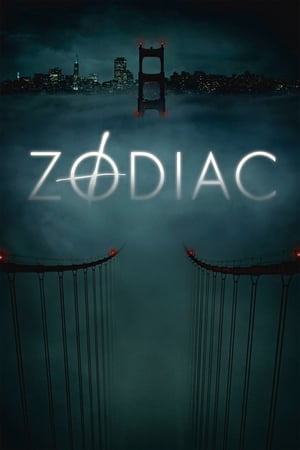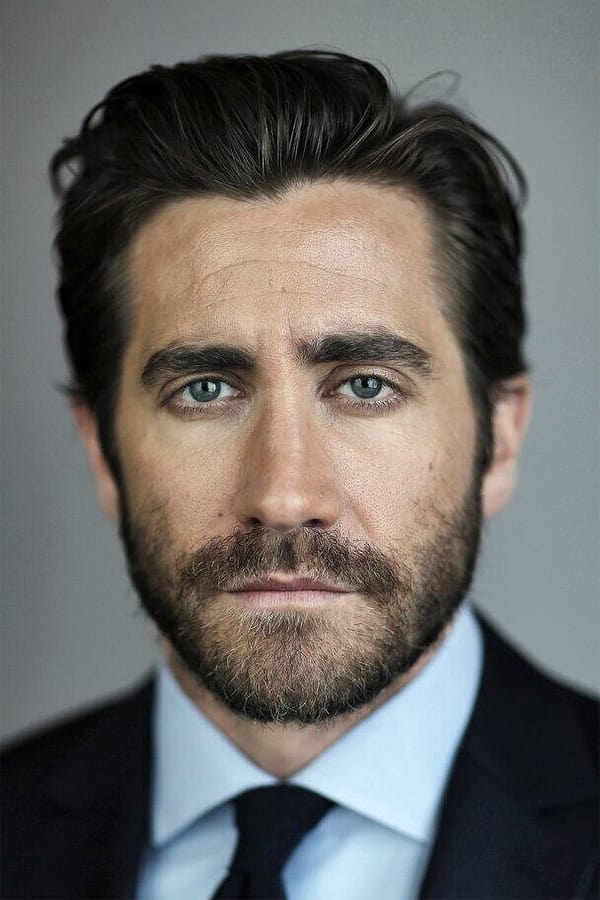Why 'Ambulance' is the Best Blockbuster to See this Year
Starring Jake Gyllenhall and Yahya Abdul-Mateen II, 'Ambulance' is a film not only about a bank heist gone wrong, but also about brotherhood.
Incluvie – Better diversity in movies.
Identity in film through scores, reviews, and insights.
Incluvie – Better diversity in movies.
Explore identity in film through scores, reviews, and insights.





“You can’t be apologetic. Not about the things that are important to you,” Jean tells Loretta about halfway into Boston Strangler, a film recently released on Hulu about the famed series of killings that occurred in Boston in the early 1960s.
Based on actual events, Loretta and Jean were two reporters who investigated and covered this brutal series of murders for the "Record American." At the time, women journalists were relegated to fluff pieces and lifestyle features, covering fashion and reviewing household products like microwaves and toasters. Absurdly, men were granted the bulk of serious reporting while women were not given any assignments of great weight, and then socially punished for covering "vapid" topics.
Keira Knightley plays Loretta McLaughlin, a young journalist tired of being relegated to fad diets and profiles of wives of political candidates. She asks her editor, Jack (played by Chris Cooper), if she can tackle homicide. More specifically, the murder of three older women. She even offers to do it in her free time while still covering ‘lifestyle.’
We’re in a very dark world. Lots of grays, little coloring. Daylight that seems zapped of warmth and vitality. Think Seven or Zodiac. It’s very Fincher-esque. There are also many scenes of characters in dark corridors or silhouetted in door frames. Invoking secrecy and leaving many quite literally in the dark, searching for answers.
What is it about certain moody period pieces that often portray characters as sad and very pissed off, smoking cigarettes, lamenting the poor state of the world and its societal boundaries? As if this setting has to be a mean and unforgiving hell of sorts in order to spawn such mad, emotionally disturbed felons and sickos. It's thinly veiled commentary. These movies often stress that things used to be a lot worse and you should be glad to be living in a time where people are ostensibly less miserable, and also less racist and homophobic. These depictions are effective and very compelling, but they are also a bit of a cliche.
The Dark Knight is widely considered to be the best comic book film of all time. Be it the poeticism in the screenplay and the visuals, or the unforgettable performance of Heath Ledger as Joker, it’s unquestionably a milestone in superhero filmmaking. So when one more Batman film was announced, I was a little skeptical. Honestly, there have been too many renditions - not that I’m complaining because I love the character and what he symbolically stands for - but there hasn’t been much uniqueness, apart from the Christopher Nolan trilogy. Still, the trailer had the color palette that felt like it was right out of a David Fincher crime thriller like Se7en or Zodiac. So, I naturally got stoked because if it was truly Fincher-esque, it would be a treat to the eyes and the mind, and I’d always wanted a Noir style film about Batman. The character is a great detective and the older comic books look and feel like the Noir movies from the 60s or 70s.
And Matt Reeves’ The Batman sequel delivers on that front! As a superhero nerd and a childhood fan of Batman, the film is like a dream come true. The Gotham presented in the film looks exactly like what one would imagine a live-action version of the comic books would look like. It’s a stale lifeless toxic dumping ground of criminal activity in a maze of sprawling skyscrapers that obscure the horizon from the eye and shield their inhabitants who apathetically enjoy the pleasures of being rich, oblivious to the suffering of the citizens of the place they call home. There are a few good people looking to make an honest living, whom Gotham will deny thanks to a corrupt police force and an abundance of hooligans, petty thieves, and highly skilled assassins. It’s a nightmare of a city, with the architecture looming like buildings out of a Gothic horror, providing shelter to the dark forces under the shadows they cast at night. And yet, it’s those shadows which the criminals themselves are afraid of. The very same spaces that allow the proliferation of delinquency also harbor the famous Caped Crusader.
Opening on a Halloween night drenched in rain, Gotham is presented to the viewer through a voiceover by Robert Pattinson who introduces it as a breeding ground for everything evil. After a montage of delinquents running away from any place in the shadow once they see the Bat-signal in the sky, The Batman himself enters the scene with Michael Giacchino’s brilliant score reaching the crescendo. And his suit is again right out of the comic books. Ben Affleck’s Batman from Justice League had been said to be very comic-accurate, but Pattinson’s Batman is even more so. In fact, the striking similarity goes beyond just the look. Actually, anyone who has played or seen walkthroughs of the Arkham video games based on the titular character of batman the animated series will realize how much the film draws inspiration from that. There are some buildings in the production that are literally lifted from the Gotham in the games, and the lighting and color palettes also seem to be inspired by the video games’ looks.
And the similarity doesn’t just end there. Pattinson’s body language as Batman himself is strikingly similar to the video game version of Batman. The combat motion especially seems to follow in the footsteps of the Arkham series. The stances and the movement when he kicks or delivers punches make The Batman feel like a live-action rendition of the video games. That makes it all the more a dream-come-true for any fan of the character. And on top of that, the gadgets being used are also a relief from the older versions of Batman we’ve seen in live-action. Tools like the grappling hook and the Batclaw are rarely seen outside the world of animation and video games - especially the Batclaw features heavily in the combat of the games, so seeing him use that in this movie was a rather special surprise for me. Outside of fighting, when he is lurking in the shadows or carefully surveying a crime scene, he uses the contact lens which doubles as a camera, and such surveillance is exactly what you’d hope for from a Batman who’s starting out.
Part serial killer investigation and part courtroom drama, the French documentary The Women and the Murderer sets itself apart from other true crime documentaries by only interviewing women. The women involved in the featured case are varied: they include the leader of the crime brigade at the time of the killings (Martine Monteil), lawyers for the prosecution (Solange Doumic) and the defense (Frédérique Pons), and a mother (Anne Gautier) of one of the serial killer’s victims. This approach showcases the role of women in bringing down Guy Georges and gives women a voice after he silenced so many. The decision to center women is especially intriguing given the genre’s popularity with women.
True crime, like any genre, has positive and negative elements. Like any of women’s guilty pleasures, social guardians tend to pick it apart, despite men being allowed to enjoy similarly fraught media without constant demands of introspection. Women’s “guilty pleasures” from soap operas to Barbie movies are often neglected by critics, while media beloved by white teenage boys in the 80s receives blockbuster adaptations. (Admittedly, I absolutely love blockbusters.) So rather than celebrate or condemn, my goal here is to discuss the good and bad of the genre and examine where The Women and the Murderer fits in.
The Women and the Murderer opens with a montage of home video footage showing women enjoying themselves. Out with friends, partying, laughing and having fun, these women are easy to relate to. Then the music grows sinister, and the fun footage is spliced together with violent paintings and crime scene documents. The true crime genre appeals to women because it centers us. Young girls are raised to be vigilant: we are taught to attend parties in groups, watch our drinks, and never get so caught up in a good time that we risk our safety. It is no surprise true crime appeals to women: it centers our fears, our anxieties, and our experiences. The horror genre functions in similar ways.
In crime films, women often feature as violent perpetrators or tragic victims. The Women and the Murderer gives us a much wider range: the women interviewed are mainly professionals, which feels notable given that Guy George targeted professional women. The choice to center female voices never feels like a gimmick: these are the people who investigated the crimes, attended the trial, and secured the conviction. They are undoubtedly excellent sources of information. Still, the decision to only interview women means that all of the subjects are white French women. In a genre that already centers white women, this approach had the potential to leave important voices out. Any documentary filmmakers interested in taking a similar approach of centering women would really need to consider whether they are omitting crucial voices of men of color or voices of trans or non-binary people.

Over the course of a decade, editors of the San Francisco Chronicle entice themselves in the murders of the Zodiac Killer. However, as time runs its course, and as interest in the case dwindles in the eyes of the professionals, and as the Killer stops interacting with the public, an amateur cartoonist from the initial sightings races against time to prevent another murder, believing this time he has the answers to crack the case.

David Fincher
Director

David Fincher
Director

Jake Gyllenhaal
Robert Graysmith

Mark Ruffalo
David Toschi

Anthony Edwards
William Armstrong

Robert Downey Jr.
Paul Avery

Chloë Sevigny
Melanie

Elias Koteas
Jack Mulanax

John Carroll Lynch
Arthur Leigh Allen

Brian Cox
Melvin Belli

Dermot Mulroney
Martin Lee

Charles Fleischer
Bob Vaughn

Zach Grenier
Mel Nicolai
Starring Jake Gyllenhall and Yahya Abdul-Mateen II, 'Ambulance' is a film not only about a bank heist gone wrong, but also about brotherhood.